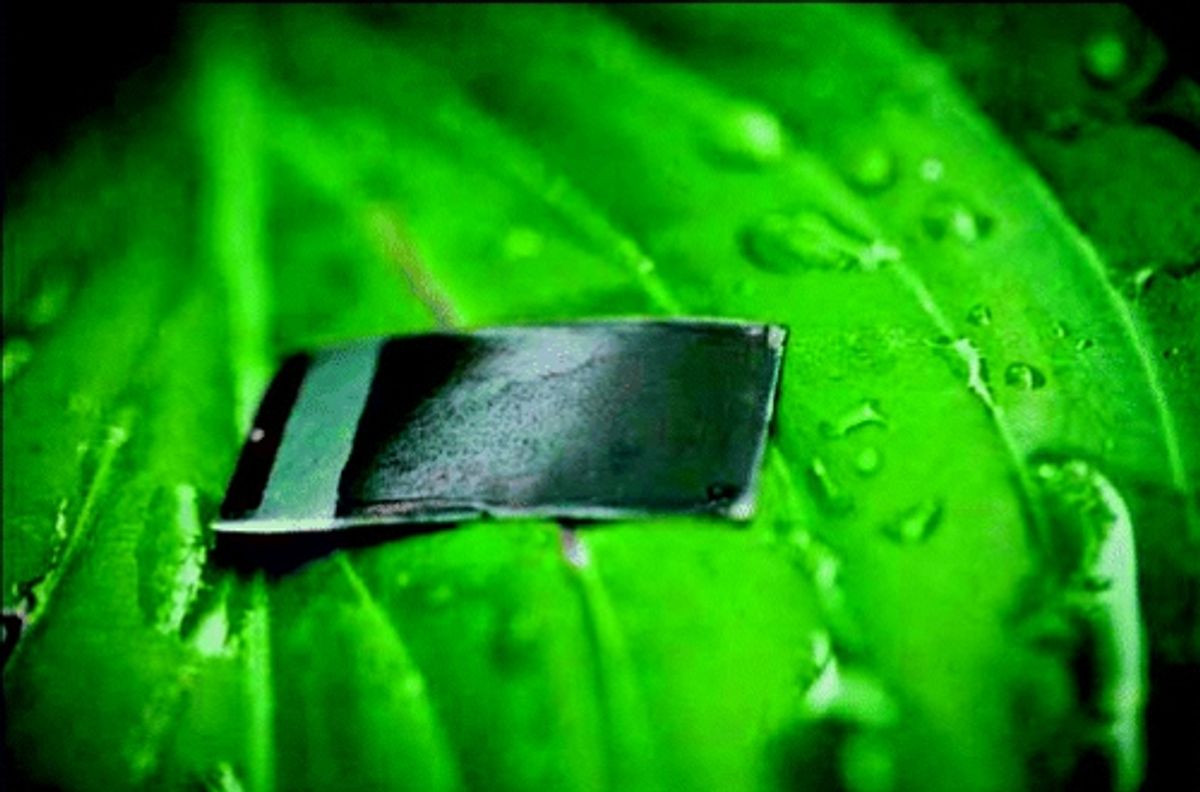The prototype for the first practical "artificial leaf," which has been hyped in the media since its flashy debut at the American Chemical Society national meeting last year, has hit development hurdles and will not be scaled up for field testing. The leaf, a playing-card-sized coated-silicon sheet, turns sunlight into storable fuel by splitting water into hydrogen and oxygen, but at a cost that's too high to justify further development, the prototype's maker told the journal Nature.
Hydrogen from a solar panel and electrolysis unit can currently be made for about US$7 per kilogram, the firm estimates; the artificial leaf would come in at US$6.50. (It costs just $1-2 to make a kilogram of hydrogen from fossil fuels.) With the prices of solar cells dropping all the time, the firm is not going to make a heavy investment that's unlikely to pay off. Instead, it is looking at cheaper designs—but these require yet-to-be-invented semiconductor materials.
The leaf was designed by chemistry professor Daniel Nocera at Massachusetts Institute of Technology (MIT), who founded Sun Catalytix in Cambridge to pursue development. Other groups have had some success with artificial photosynthesis before, but always hit stumbling blocks. Nocera's group made it work, in part, by using cheap, abundant materials as catalysts. The design involves joining a commercially available triple-junction solar cell to two catalysts: cobalt-borate for splitting the water molecule and a nickel-molybdenumzinc alloy to form the hydrogen gas. Nocera reported his design in Science in September.
Sun Catalytix has claimed that the device could eventually produce a kilogram of hydrogen for about US $3. Nocera has also claimed that artificial leaves could enable people everywhere to live without being connected to a power grid.
But Nocera has a reputation for hyping his discoveries, which are often amplified by journalists and MIT's public relations office, according to a recent profile on Nocera in The New Yorker.
[Nocera] hasn't always rushed to correct mis-impressions, and at least some of this overselling has been intentional. Attracting funding for renewable-energy research requires showmanship...Nocera's challenge outside the laboratory has been to build enthusiasm for the artificial leaf even though, in anything like its current form, it is designed to meet a level of energy demand that by modern American standards is almost immeasurably low.
In case you are feeling down about companies generating buzz for new renewable energy research and then abandoning the work, check out Hypersolar in Santa-Barbara, California, which is hanging tough and chronicling its progress in producing hydrogen gas from wastewater.
Photo Credit: American Chemical Society
Emily Waltz is a features editor at Spectrum covering power and energy. Prior to joining the staff in January 2024, Emily spent 18 years as a freelance journalist covering biotechnology, primarily for the Nature research journals and Spectrum. Her work has also appeared in Scientific American, Discover, Outside, and the New York Times. Emily has a master's degree from Columbia University Graduate School of Journalism and an undergraduate degree from Vanderbilt University. With every word she writes, Emily strives to say something true and useful. She posts on Twitter/X @EmWaltz and her portfolio can be found on her website.



